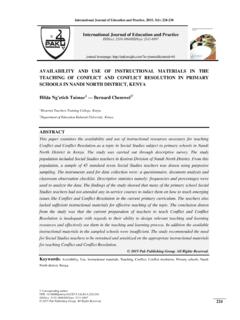Transcription of Definition and properties of tensor products
1 Chapter7 Definition and properties oftensor productsThe DFT, the DCT, and the wavelet transform were all defined as changes ofbasis for vectors or functions of one variable and therefore cannot be directlyapplied to higher dimensional data like images. In this chapter we will introduceasimplerecipeforextendingsuchon e-dimensionalschemestotwo(andhigher)dime nsions. The basic ingredient is thetensorproductconstruction. This isageneraltoolforconstructingtwo-dimensi onalfunctionsandfiltersfromone-dimension al counterparts. This will allow us to generalise the filtering andcompression techniques for audio to images, and we will also recognise someof the basic operations for images introduced in Chapter 6 as tensor ,likeforexam-ple an image, is conveniently represented in terms of a matrixXwith elementsXi,j, and with indices in the ranges0 i M 1and0 j N to apply filters toXwould be to rearrange the matrix into a long vector,column by column.
2 We could then apply a one-dimensional filter to this vectorand then split the resulting vector into columns that can be reassembled backinto a matrix again. This approach may have some undesirable effects near theboundaries between columns. In addition, the resulting computations may berather ineffective. Consider for example the case whereXis anN Nmatrixso that the long vector has lengthN2. Then a linear transformation applied toXinvolves multiplication with anN2 N2-matrix. Each such matrix multipli-cation may require as many asN4multiplications which is substantial whenNis concept of tensor products can be used to address these problems. Us-ing tensor products , one can construct operations on two-dimensional functionswhich inherit properties of one-dimensional operations.
3 tensor products alsoturn out to be computationally (a) Original.(b) Horizontal smoothing.(c) Vertical smoothing.(d) Horizontal and vertical : The results of smoothing an image with the filter{1/4,1/2,1/4}horizontally, vertically, and both. The pixels are shown as disks with intensitycorresponding to the pixel The tensor product of vectorsIn Chapter 6 we saw examples of several filters applied to images. The filters ofspecial interest to us now are those that determined a new image by combiningneighbouring pixels, like the smoothing filter in Example and the edgedetection filter in Example Our aim now is to try and apply filters likethese as a repeated application of one-dimensional filters rather than using acomputational molecule like in Chapter 6. It will be instructive to do thiswith an example before we describe the general construction, so let us revisitExample (a) shows an example of a simple image.
4 We want to smooth thisimageXwith the one-dimensional filterTgiven byyn=(T(x))n=(xn 1+2xn+xn+1)/4,orequivalentlyT={1/4,1/2,1 /4}. There are two obvious213one-dimensional operations we can the filter to each row in the the filter to each column in the problem is of course that these two operations will only smooth the imageeither horizontally or vertically as can be seen in the image in (b) and (c) ofFigure what else can we do? We can of course first smooth all the rows ofthe image and then smooth the columns of the resulting image. The resultof this is shown in Figure (d). Note that we could have performed theoperations in the opposite order: first vertical smoothing and then horizontalsmoothing, and currently we do not know if this is the same. We will showthat these things actually are the same, and that computational molecules,as we saw in Chapter 6, naturally describe operations which are performedboth vertically and horizontally.
5 The main ingredient in this will be the tensorproduct construction. We start by defining the tensor product of two ( tensor product of vectors).Ifx,yare vectors of lengthMandN,respectively,theirtensorprod uctx yis defined as theM N-matrixdefined by(x y)ij=xiyj. In other words,x y= particularx yis a matrix of rank1, which means that most matricescannot be written as tensor products . The special caseei ejis the matrixwhich is1at(i, j)and0elsewhere, and the set of all such matrices forms abasis for the set ofM (Interpretation of tensor products for vectors).LetEM={ei}M 1i=0andEN={ei}N 1i=0be the standard bases forRMandRN. ThenEM,N={ei ej}(M 1,N 1)(i,j)=(0,0)is a basis forLM,N(R),thesetofM N-matrices. This basis is often referredto as the standard basis forLM,N(R).An image can simply be thought of as a matrix inLM,N(R).
6 Withthisdefinition of tensor products , we can define operations on images by extendingthe one-dimensional filtering operations defined ( tensor product of matrices).IfS:RM RMandT:RN RNare matrices, we define the linear mappingS T:LM,N(R) LM,N(R)by linear extension of(S T)(ei ej)=(Sei) (Tej). The linear mappingS Tis called the tensor product of the First,fromlinearalgebraweknowthat,whenTi s linear mapping fromVandT(vi)is known for a basis{vi}iofV,Tis uniquely determined. In particular, since the{ei ej}i,jform a basis,there exists a unique linear transformationS Tso that(S T)(ei ej)=(Sei) (Tej). This unique linear transformation is what we call the linearextension from the values in the given Talso satisfies(S T)(x y)=(Sx) (Ty). This followsfrom(S T)(x y)=(S T)(( ixiei) ( jyjej)) = (S T)( i,jxiyj(ei ej))= i,jxiyj(S T)(ei ej)= i,jxiyj(Sei) (Tej)= i,jxiyjSei((Tej))T=S( ixiei)(T( jyjej))T=Sx(Ty)T=(Sx) (Ty).
7 Here we used the result from Exercise 5. Linear extension is necessary anyway,since only rank1matrices have the formx (Smoothing an image).Assume thatSandTare both filters,and thatS=T={1/4,1/2,1/4}.LetussetM=5andN=7, andletuscompute(S T)(e2 e3).Wehavethat(S T)(e2 e3)=(Se2)(Te3)T=(col2S)(col3T) 2100112100012100012110012 T=14 2100000121000001210000012100000121000001 211000012 ,we find that14 01210 14 0012100 =116 00000000012100002420000121000000000 We recognize here the computational molecule from Example for smoothingan image. More generally it is not hard to see that(S T)(ei ej)is thematrix where the same computational molecule is placed with its centre at(i, j).215 Clearly then, the linear extensionS Tis obtained by placing the computationalmolecule over all indices, multiplying by the value at that index, and summingeverything together.
8 This is equivalent to the procedure for smoothing we learntin Example One can also write down component formulas for this as achieve this, one starts with writing out the operation for tensor productsof vectors:((T T)(x y))i,j=((Tx) (Ty))i,j=(Tx)(Ty)T)i,j=(Tx)i(Ty)j=14(xi 1+2xi+xi+1)14(yj 1+2yj+yj+1)=116(xi 1yj 1+2xi 1yj+xi 1yj+1+2xiyj 1+4xiyj+2xiyj+1+xi+1yj 1+2xi+1yj+xi+1yj+1)=116((x y)i 1,j 1+ 2(x y)i 1,j+(x y)i 1,j+12(x y)i,j 1+ 4(x y)i,j+ 2(x y)i,j+1(x y)i+1,j 1+ 2(x y)i+1,j+(x y)i+1,j+1).Since this formula is valid when applied to any tensor product of two vectors,it is also valid when applied to any matrix:((T T)X)i,j=116(Xi 1,j 1+2Xi,j 1+2Xi 1,j+4Xi,j+2Xi,j+1+2Xi+1,j+Xi+1,j+1)This again confirms that the computational molecule given by Equation inExample is the tensor product of the filter{1/4,1/2,1/4}with we have seen that the computational molecules from Chapter 1 canbe written as tensor products , not all computational molecules can be writtenas tensor products : we need of course that the molecule is a rank1matrix, sincematrices which can be written as a tensor product always have tensor product can be expressed explicitly in terms of matrix :RM RMandT.
9 RN RNare matrices, the actionof their tensor product on a matrixXis given by(S T)X=SXTTfor anyX LM,N(R). have that(S T)(ei ej)=(Sei) (Tej)=(coli(S)) (colj(T)) =coli(S)(colj(T))T=coli(S)rowj(TT)=S(ei ej) means that(S T)X=SXTTfor anyX LM,N(R),sinceequalityholdson the basis vectorsei leads to the following implementation for the tensor product of matrices:Theorem (Implementation of a tensor product of matrices).IfS:RM RM,T:RN RNare matrices, andX LM,N(R),wehavethat(S T)Xcan be computed as every column the resulting every column in the resulting the resulting recipe for computing(S T)Xis perhaps best seen if we write(S T)X=SXTT=(T(SX)T)T.( )In the first step above we computeSX,inthesecondstep(SX)T,inthethir dstepT(SX)T,inthefourthstep(T(SX)T)T. The reason for writing the tensorproduct this way, as an operation column by column, has to do with with thatSandTare mostly filters for our purposes, and that we want to reuse efficientimplementations instead of performing full matrix multiplications, just as wedecided to express a wavelet transformation in terms of filters.
10 The reason forusing columns instead of rows has to do with that we have expressed filteringas a matrix by column multiplication. Note that this choice of using columnsinstead of rows should be influenced by how the computer actually stores valuesin a matrix. If these values are stored column by column, performing operationscolumnwise may be a good idea, since then the values from the matrix are readin the same order as they are stored. If matrix values are stored row by row,it may be a good idea to rewrite the procedure above so that operations areperformed row by row also (see Exercise 7).Theorem leads to the following algorithm for computing the tensor prod-uct of matrices:[M,N]=size(X);forcol=1:NX(:,col )=S*X(:,col);endX=X forcol=1:MX(:,col)=T*X(:,col);endX=X ;217 This algorithm replaces the rows and columns inXat each step.
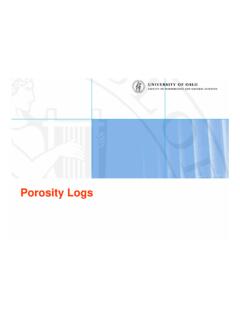

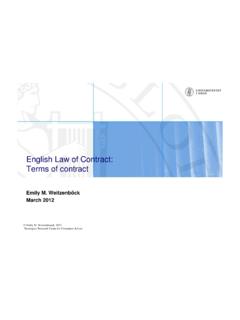



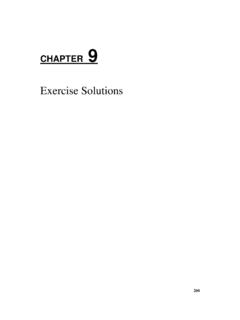

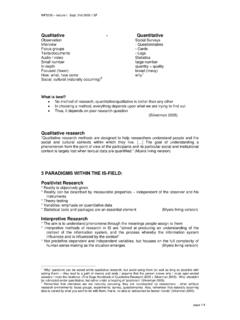




![[How To] Realtek audio driver, Nahimic and related ...](/cache/preview/0/3/7/9/c/9/6/5/thumb-0379c96554084984e4e281dd455ce565.jpg)

